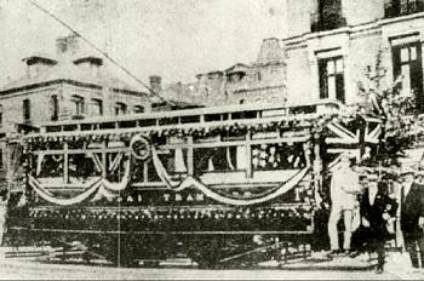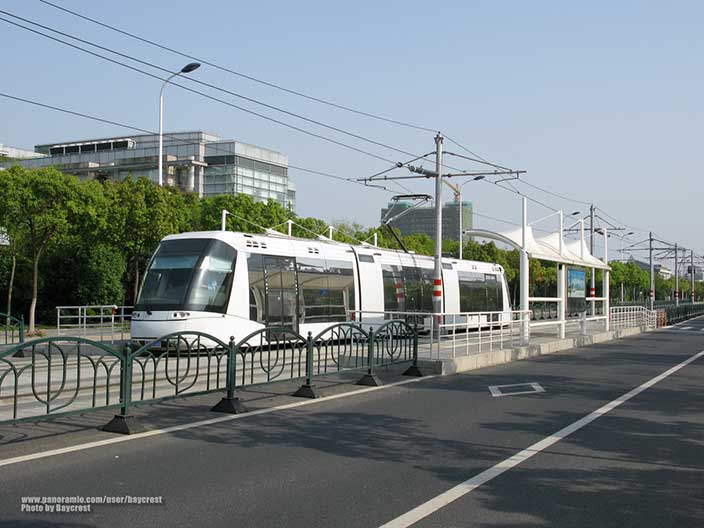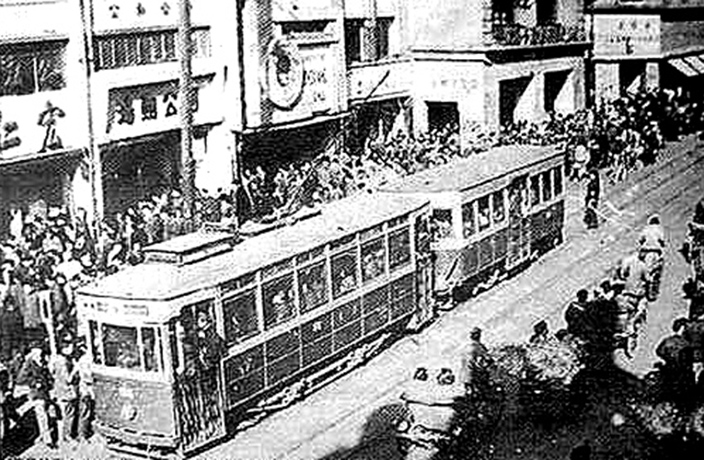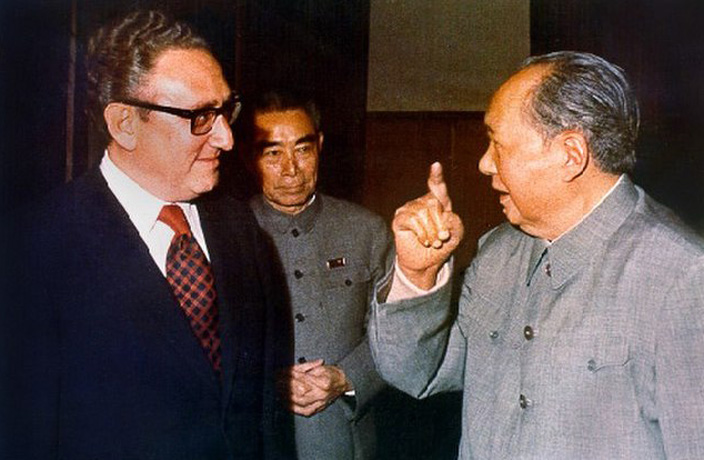Interview and research by Yang Dongmei
Trams and trolleybuses have been a part of Shanghai's history for over a hundred years. This is evidenced by almost all film and television works about 'Old Shanghai,' in which the electric bus is an indispensable element. Shanghainese people have dubbed these vehicles 'plait buses' due to their overhead wires and poles.
In 1899, China’s first tram appeared in Beijing. German company Siemens built the track, which connected Ma Jiabao railway station in the suburbs and Yongdingmen. Since then, all Chinese cities that were treaty ports or had concessions opened their own lines.
Shanghai's first tram line, the Yingshang No. 1, first opened in 1908. The line was run by the British System, and stretched six kilometers from Jing'an Temple to the Bund.

Shanghai's First Tram, in 1908
“Fearing the risk of electric shock, nobody dared to take trams at first," Gao Qiao, Secretary of Shanghai's Public Transport Industrial Association, tells us. "For this reason, the British hired unemployed people as special passengers and also gave toilet water, toothpaste and soap bars as presents to pedestrians. That helped improve their business. From the 1930s to 1950s, trams were all over downtown, becoming the main force of public transport in the city.”
Shanghai's first trolley, meanwhile, started running in the former French Concession on November 14, 1914, becoming the first Chinese city to have a trolleybus system. The city's first trolley line ran from Zhengjiamu Bridge (today's Fujian Zhong Lu by Yan'an Dong Lu) to Old Zhaqiao Nantu (today's Fujian Zhong Lu by Beijing Dong Lu), with a total length of around a kilometer.

Trams on Nanjing Road.
By the 1950s, other major cities began establishing their own trolleybus systems. The flexibility of the system made it easy to establish – and preferable to trams.
“The most major difference between trams and trolleys is that the trams needed road track, but the trolleys did not," says Gao. “The biggest bottleneck that restricted the development of the trams was the tracks. Furthermore, the slow speed and noisiness of the trams were considered huge weaknesses."
Gradually, trolleybuses replaced the trams. By the 1970s, Shanghai's tram system was demolished altogether with the closing of the No. 3 line (from Hongkou Park to Wujiaochang) on December 1, 1975. This ended nearly 70 years of tram history in Shanghai.
That wasn't the end of the tram system, however. After a 34-year absence, Pudong District opened a rubber-tired tram line in 2009 in Zhangjiang High Technology Park to commemorate the city's classic transport system. Compared to early trams, the new ones used more advanced traction and braking equipment, which was considered an achievement in high-tech.

A modern Tram in Zhangjiang High Technology Park.
As for the trolleybuses, they saw their own decline in the 1990s as the city began cutting back to make way for the construction of rail transit and municipal roads. At its peak in the 1990s, the trolley system had 983 buses. By 2011, it had just 150. The city was rumored to be retiring all trolleybuses by 2015.
Gao explains the reasoning behind the city wanting to phase out the trolleybuses: “Trolleybuses are driven by electricity – they’re very environmentally friendly. Compared to ordinary buses, their cost and failure rates are also lower. But bad flexibility and electric wires hamper their development.
“Some experts think these electric wires cause visual pollution and affect the look of the city. But personally, I don’t think it’s a problem. As I know, many cities in developed countries still keep and even restore wires for trams and trolley buses.”
Plans to phase out the trolleybuses was met with harsh criticism online from nostalgic passengers.
“I love these trolleybuses," one netizen commented. "Trams and trolley buses are symbols of the city. We have lost trams — we can’t lose trolleys too!”
The system still stands, and on November 14, 2014, it turned 100 years old, becoming the first trolleybus system in the world to reach that milestone.
For more, This Day in History stories, click here.





















0 User Comments